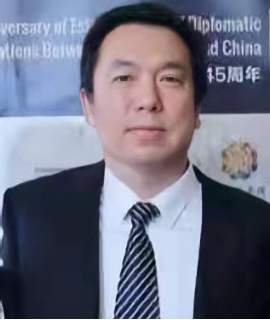Title : The valuable germplasm resources of wild elderberry in China
Abstract:
Wild elderberry has been proven to significantly have inhibitory capacity against COVID-19. This commentary used to be presented in June of 2013 at the first international symposium for the elderberry, the conference, held in the USA, many scientists were surprised to learn of there are the 9 native species of wild elderberry in China. This paper aims to publish our comment on the elderberry, as, since our initial presentation in 2013, no English literature references are present in China. Most Chinese horticulturists and farmers consider the elderberry a wild plant. It is regarded as a plant of little value due to its abundance and ease of harvest. This article contains details of the Sambucus species groups, including the botanical names, Chinese common names, geographic distributions, economic uses and full descriptions of the elderberry. In southwest China, where the climate is mildly warm, there are 2 species of elderberries; one, Sambucus adnata, is termed the “blood-red herb-elderberry” by local residents as the roots, rhizomes, and branches exude red-juice when broken. The second, named S. javanica or S. chinensis, is commonly called the “herb-elderberry”. In northeast China where the climate is cold, there are 7 species of elderberry, however, most scientists recognize only 2 main species: Sambucus. williamsii, commonly called the “woody-elderberry”, and Sambucus sibirica, commonly called the “Siberian woody-elderberry.” The other 5 species of elderberry in northern-east of China.
The stems and branches of elderberry were extracted by re-fluxing method in ethanol to obtain the ethanol-extracted ointment cream, mixed suspension in proper order extracted in water with chloroform, ethyl acetate and n-butanol. The chloroform extract and the ethyl acetate extract were respectively by chemical separation to obtain useful Lignin and phenolic acids for the treatment of osteoporosis. The experiments in vivo and in vitro have proved that the present invention has a good impact on anti-osteoporosis and has no negative impact on estrogen such as estradiol. Elderberry ethanol extract can inhibit the bone transformation caused by ovariectomized, thereby preventing bone loss, increasing bone mineral density and strength parameters, and elderberry has a therapeutic impact on osteoporosis caused by menopausal estrogen deficiency. This impact is equivalent to the positive experience drug of estrogen such as estradiol, but has no negative impact on estrogen such as estradiol.
Lignin is located between cellulose fibers and it plays a role in resisting pressure. Among woody plants, the lignin content accounts for 25%, it is the second place of the richest organic matter in the world (cellulose is the first). The mechanism of elderberry for fracture treatment is that it is rich in lignin.



